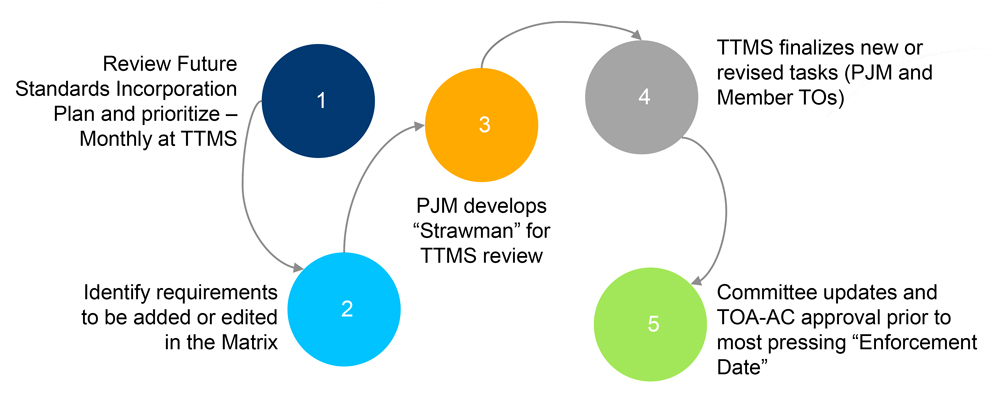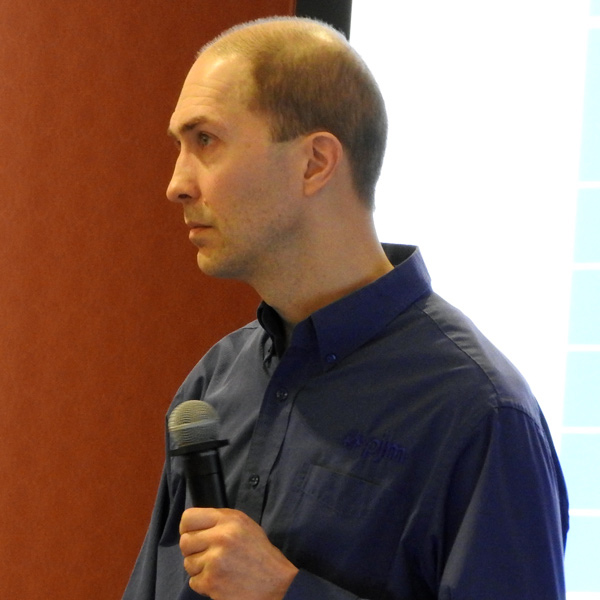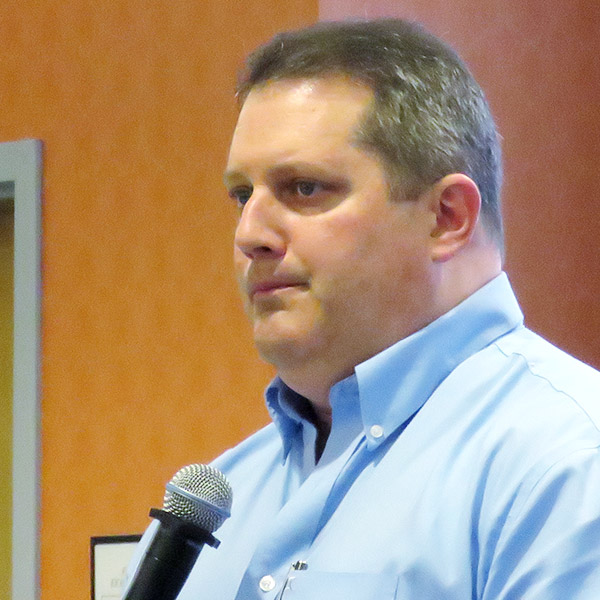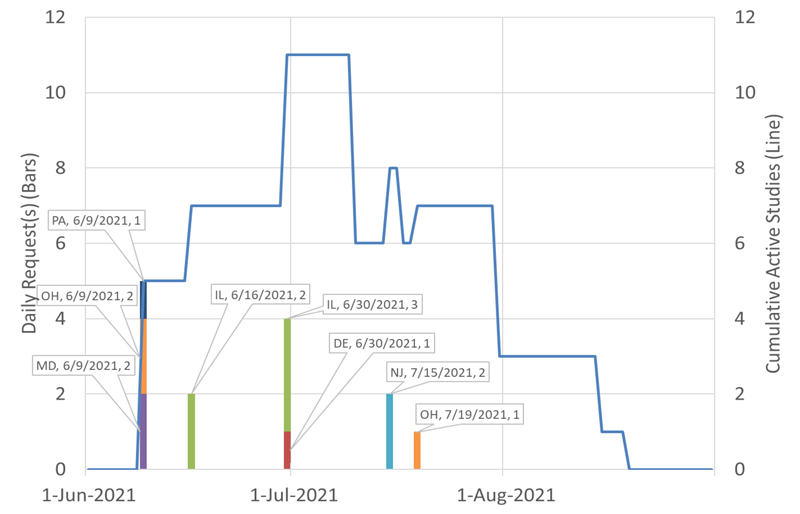WASHINGTON — Louisiana’s Jason Lanclos is both excited and anxious over the funding opportunities in the long-awaited Infrastructure Investment and Jobs Act (IIJA).
“When you start looking at the sheer amount of data and programs and funding that’s in [the bill], it’s extremely intimidating,” said Lanclos, director of the Technology Assessment Division in the state’s Department of Natural Resources. “But I think that there are also a tremendous amount of opportunities.”
For that reason, Lanclos said, he is grateful for his ability to compare experiences with other state energy officials, as he did during a panel discussion at the National Association of State Energy Officials’ (NASEO) Energy Policy Outlook conference Friday. “I think that that’s where you kind of have validated that, ‘Hey look, I’m not in this alone. There are other states who are facing the same things and having similar challenges.’”
Lynn Retz, director of the Energy Division at the Kansas Corporation Commission, echoed Lanclos. “Don’t ever hesitate to tap into your neighbors, your co-workers or colleagues here, because I’m not [ashamed] to call someone, send an email, beg, borrow steal their stuff,” she said. “Adapt it to what works — it’s called being resourceful.”
The discussion, which Lanclos moderated, identified states’ commonalities while also highlighting unique challenges faced by some, such as remote Alaskan communities and the islands of Hawaii.
Hawaii: Six Independent Grids
Scott Glenn, chief energy officer for the Hawaii State Energy Office, noted that his state has six standalone grids. “Each island has only the electricity produced on that island for its use and reliance. We don’t have any cables connecting the islands or cables or anything,” he said.
“We’re kind of looking at this money as an opportunity to really change things,” he said. With about 60% of the state’s homes equipped with rooftop solar, the state was well on its way to building out its distributed generation before the infrastructure funding.
Glenn would like to use some of the state’s funding to decarbonize the six- and nine-seat planes that residents use to get from one island to another.
“The main part of their costs for flying between the islands is the takeoff and landing — it’s the jet fuel for that 20-minute flight,” he said. “And so, if we can electrify that, we can lower that cost dramatically.”
One challenge: Hawaii’s smallest islands total only 7 MW of capacity. “They’re not going to be able to charge a plane,” he said.
Glenn cited the importance of stakeholder collaboration. “We’re islands. We try to say, ‘You can’t throw people out of the canoe.’”
He said his office will seek to dissuade multiple parties from proposing competing ideas for the same funding source, “so that we can leverage our limited opportunities to apply for things, and then also better coordinate local match availabilities.”
On the positive side, the state has only have four counties, making coordination more manageable. “We can get all four mayors together in the room [and ask] ‘What are you guys doing?’ So it’s digestible.”
Alaska: Feeling Excluded
Alaska found itself at the bottom half of the electric vehicle funding allocations announced by the U.S. Department of Transportation and Department of Energy Thursday. Its $7.8 million ranked 30th among the states, Puerto Rico and D.C. (See States to Get $615 Million for EV Charging from IIJA Funds.)
“It’s nice to have electric charging for vehicles every 50 miles [as envisioned in the Federal Highway Administration’s guidelines for the EV infrastructure program],” said Curtis Thayer, executive director of the Alaska Energy Authority. “But if you don’t have any power for 100 miles, you’ve got a problem. And there’s no way of getting three-phase power in there when the transmission line is at least 20, 30 miles away.”
Some 200 rural villages were excluded from funding “because there was complete exclusion for any of the rural villages … that are not part of the National Highway System,” he said.
The state also is finding it difficult to obtain federal funding to shift from fossil fuels. “For us to introduce more renewables, we’re going to have to upgrade the transmission lines that we have. We have currently 138 [kV] serving a lot of Alaska; we want to upgrade to 230 [kV]. … But we’re a little too small for the 500 kV.
“We are too small for some of the funding available or too big for other money,” he said.
Kansas: Messaging is Key
Kansas’ Retz was thrilled to announce to her colleagues that her energy office within the state Corporation Commission recently doubled in size.
“Most of you know I have been an office of one. Well, they just allowed me to hire one more person. So now I’m an office of two,” she said, prompting applause and laughter from the crowd at the Fairmont hotel in Georgetown.
Retz said she will be focusing on reaching rural communities with programs such as small business energy audits and a program to benchmark the energy efficiency of K-12 school buildings.
She’s also working to help add EV charging to Department of Wildlife and Parks’ facilities whose infrastructure has been neglected.
Because her office is within the KCC, Retz said she is not permitted to “establish policy” but can “help facilitate” policy discussions. “So it is bringing all of these state stakeholders to the table and knowing who to recognize and make those introductions. Because what I’ve also found is I have people at Wildlife and Parks who wanted to talk about the infrastructure at the facilities that hadn’t reached out to our Department of Transportation. So part of my role is literally with those stakeholders figuring out who should be at the table to have those conversations and facilitating those conversations. And then making those introductions that cross other state lines as well.
“You didn’t really want to talk about [EV charging] prior to this, just simply because of the political climate,” she said. “I have to be careful about the terminology that I use and how I message the programs that I’m going to move forward.”
Using the federal funds and being able to do so quickly, is “going to be critical,” she added. “If I get some of it launched off early, others will have no clue what I’m doing, and I’m going to be too far down the road to do anything about it,” she said.
Michigan: Flexibility Essential
Robert Jackson, director of the energy office in the Michigan Department of Environment, Great Lakes, and Energy, said state officials are focused on meeting Gov. Gretchen Whitmer’s 2050 carbon neutrality goals while also making their programs as flexible as possible in case of a change in administration or program priorities.
The state is creating workgroups to help guide efforts to win Energy Efficiency and Conservation Block Grants. Michigan still has energy efficiency programs from the American Recovery and Reinvestment Act (ARRA), but that funding, he said, was “prescriptive.”
The state initially targeted its EE and renewable energy program toward small businesses, in response to the decline of the auto industry in the state. “We needed to provide these businesses with funding in order to change their focus … and to retool them to become more efficient,” he said. “But that money can only be used for that purpose now.”
Lanclos agreed with Jackson’s recommendation for flexibility. He recalled an economic development roundtable he did in Louisiana with the Committee of 100 for Economic Development. “A lot of the conversation was on depoliticizing climate — in other words, trying to bring in plans that can survive [changes in] administrations.”
The state is considering whether hydrogen or carbon capture, utilization and storage (CCUS) can help decarbonize its industrial sector.
“With us, our biggest challenge is with industry,” he added. “We have these high-intensity, high end-use industries that use a lot of power. And so working with them and trying to make sure that folks like that are at the table when you’re crafting these plans, is really, really important.”
South Carolina: Office of Resilience Looks beyond Flooding
Lanclos said the IIJA has forced state energy officials to work with agencies and organizations that “are a little bit out of our comfort zone, or that we don’t work with every day.” He cited opportunities to increase his office’s engagement with the Louisiana Public Service Commission on efforts considering offshore wind and hydrogen.
South Carolina also is seeing greater interagency collaboration, said Sara Bazemore, director of the state energy office within the South Carolina Public Service Commission’s Office of Regulatory Staff.
The state recently created an Office of Resilience in response to legislation that focused on threats from flooding.
“It was a great effort with different agencies coming together and going, ‘Oh, we’ve already done a report on that. How about I summarize that?” she said. Although flooding was the initial legislative mandate the office is now taking a broader view to consider the resilience of critical energy facilities, said Bazemore.
Pennsylvania: Looking to ‘Scale Out’
David Althoff Jr., director of the energy programs office in the Pennsylvania Department of Environmental Protection, said ARRA allowed the state to begin to “scale up” its renewables with funding for projects such as a 3-kW solar array at the Philadelphia Zoo. “Now we have like 15 GW of solar in the PJM queue. That’s scaling up. But scaling out, you know, is probably harder: How are we going to get this out to communities? Because that’s really where it needs to go, in my view.”
In Pennsylvania, that means 67 counties and 2,700 municipalities — and the need for an “army” of clean energy workers, Althoff said.
“This is a lot of money. You’re not going to be able to do it yourself,” he said. “… That $62.5 billion, that’s not all coming to state energy offices. Some of that’s going to our [departments of transportation]. Some of that’s going to community and economic development. Ultimately, I think we’re gap fillers … sort of like, you know, like batteries and bacon — it makes it all better.”
“To some degree we’re on a ‘hearts and minds’ tour,” he continued. “The point is, is that where the battle will be won on clean energy? That is how people connect with it, you know — at their home, in their communities at their school.”
Connecticut: ‘Well Positioned’
Vicki Hackett, deputy commissioner of energy in the Connecticut Department of Energy and Environmental Protection, said her state is “really well-positioned” to take advantage of the IIJA.
“We’ve done a fair amount of planning and policy development,” she said. “And the needs that we’ve identified and begun to address are very much aligned with the act, so we have existing programs and some that are in late stages of development that we can leverage.”
She noted that the state Public Utilities Regulatory Authority has opened several grid modernization dockets and said the state’s modeling indicates that energy storage “will play an increasingly significant role in ensuring the reliability of the grid and minimizing wasted generation as we continue to employ offshore wind in New England.
“The existing transmission system needs to be upgraded and expanded to meet the regional energy capacity additions that are needed to achieve our goals and other states’ goals,” she said. “We’ve also identified retention of our nuclear facilities as a critical factor in reaching our decarbonization goals while maintaining reliability as load balancing technologies evolve.”
 Midday load in New England dropped below overnight load on Feb. 9, above, and Feb. 11. | ISO-NE
Midday load in New England dropped below overnight load on Feb. 9, above, and Feb. 11. | ISO-NE
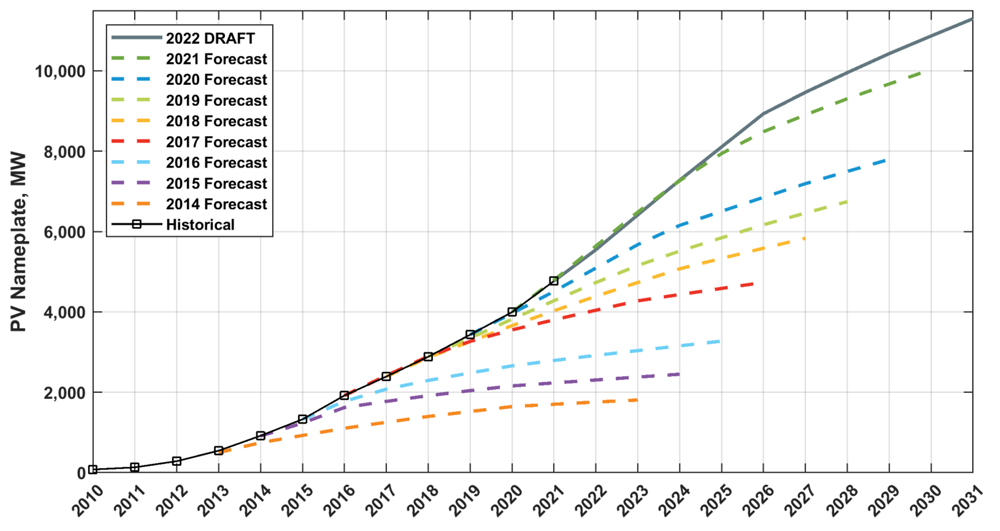 Solar growth in New England has repeatedly outpaced forecasts. | ISO-NE
Solar growth in New England has repeatedly outpaced forecasts. | ISO-NE
